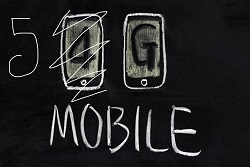5G promises a step-change to what mobile networks can do, but according to the GSMA, this promise hides a danger of being all things to all people.
At its Mobile 360 event this week, the trade body issued a report exploring the development of 5G. It is aiming to bring clarity to an area that seemingly covers every new technology type that has been released or is being trialled, more than five years before it is likely to appear commercially.
Last month, Ericsson and IBM launched new research into phased array technology, which uses steerable antennae and will be used in small cells for 5G.
5G has even crept into the mainstream, with London Mayor Boris Johnson promising to make the UK’s capital a 5G ready city by 2020.
Dan Warren, Senior Director of Technology at GSMA, accepts there is a slight case of trying to close the stable door when the horse has already bolted and warns there is a danger of the conversation getting out of control.
He says: “With 5G, it just seems there are a number of things. The discussions are driven by the vendors because they see a real opportunity to badge a lot of things with a label that allows them to sell to those who are not as tech minded.”
Currently, 5G spans a range of different technology, from virtualised networks to the Internet of Things, and Warren thinks this broad church is its biggest problem.
He says: “I don’t like putting a label across a whole range of different technology with a lot of different motivations. It implies interdependency among items that are being developed differently. It’s a means of making anything that’s new sound a bit more sexy.”
One issue with 5G is promising too many different things to operators, some of which are contradictory. Warren says: “This broad range of requirements doesn’t add up. You can’t deploy a new radio access network at the same time as reducing the cost of running this network. Something like millimetre wave is very power hungry.”
According to Warren, there is a danger of 5G being used as a cure-all for the industry, as a technological ideal that will solve financial concerns and utterly transform their businesses.
He says: “The challenges are more inherent to the telecoms industry. Take the Internet of Things. One of the biggest challenges is coverage. If you want to address that then new technology offering the highest data rates is not going to solve it. You need to change the business model. People don’t deploy technology in fields because the technology isn’t right. It’s because no justifiable investment is there.”
So in an ideal world, what should 5G be? Warren thinks the focus needs to be more of a step-change for operators, in data rates and reduced latency.
He says: “It’s a new radio access network with the requirement to offer xGBps.”
The GSMA has identified several potential use cases for the technology, from driverless cars to virtual or augmented reality.
While seemingly a limited framework, Warren says there are plenty of issues to solve within it.
He explains: “The challenge is not the bandwidth. One millisecond latency will really change a lot of industries. You are running up against the laws of physics so the content needs to be served right next to the base station.”
Warren thinks it likely 5G will play in the higher frequencies, adding that will require “some pretty clever stuff” from tech arms. He is sceptical of recent claims by Tele2 CTO Joachim Horn that the focus needs to be on sub-2GHz spectrum.
Warren says: “Sub 2GHz is a great place to play but the amount of spectrum available is very limited. If the spectrum was there it would have been licensed by now.”
The GSMA believes there is still time to shape the debate. Warren says: “If you need 3GPP to standardise it and the ITU to identify stable spectrum then you need to identify this with a lot more rigour.”
He adds: “What I hope is people just calm down a bit. There’s no definition yet and one of the areas where we are clear on is we need to define what 5G is.”
The GSMA is hopeful that the overexcited industry listens and follows suit.



